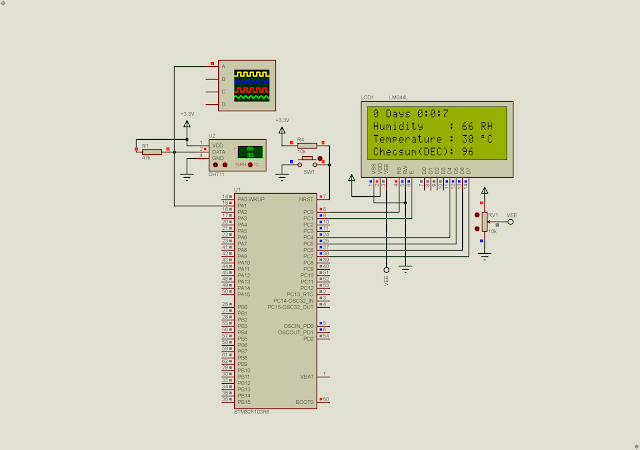SysTick is a timer bases on timer interrupt that regularly update its value. We can use it for generating timing delay. It run on background allowing the main program loop to do other tasks. In this example I will use this feature to create a 4-digit digital clock. It shows only MM:SS.
 |
| Simulating Program |
It's free running as it's just an introductory example. Display type is common anode. It's just a simulation model in Proteus VSM. I'm not sure about the read physical device. Device's clock rate is 8MHz.
 |
| Device Configuration |
I use STM32 HAL driver and code configuration wizard to write this program.
Click here to download its source file.
For other similar posts please check,
- Getting Started With STM32F103C8T6 Module with STM32CubeIDE
- STM32F103C8T6 Blue Pill SysTick and Multiplexing Display Example
- STM32F103C8T6 Blue Pill Switch And Multiplexing Display Interface Using SysTick
- STM32F103C8T6 Blue Pill SysTick LED Blinking
- STM32F103R6 Common Anode Seven Segments Display Example
- STM32F103R6 Common Anode Seven Segments Display And Switch Interfacing
- STM32F103R6 Simple 2-Digit Multiplexing Display And Switch Example
- STM32F103R6 SysTick And Digital Clock Example
- STM32F103R6 SysTick Two-Digit Multiplexing Display and Push Button




No comments:
Post a Comment